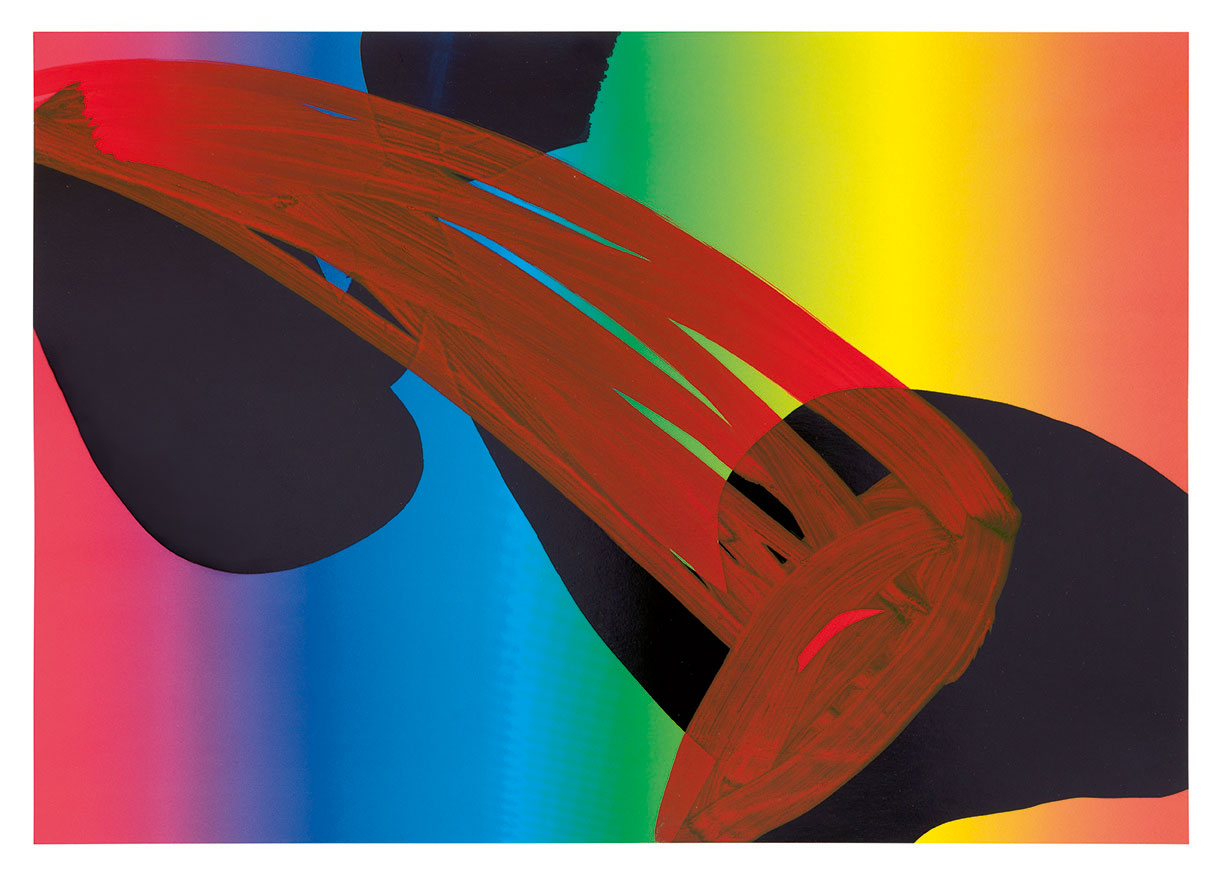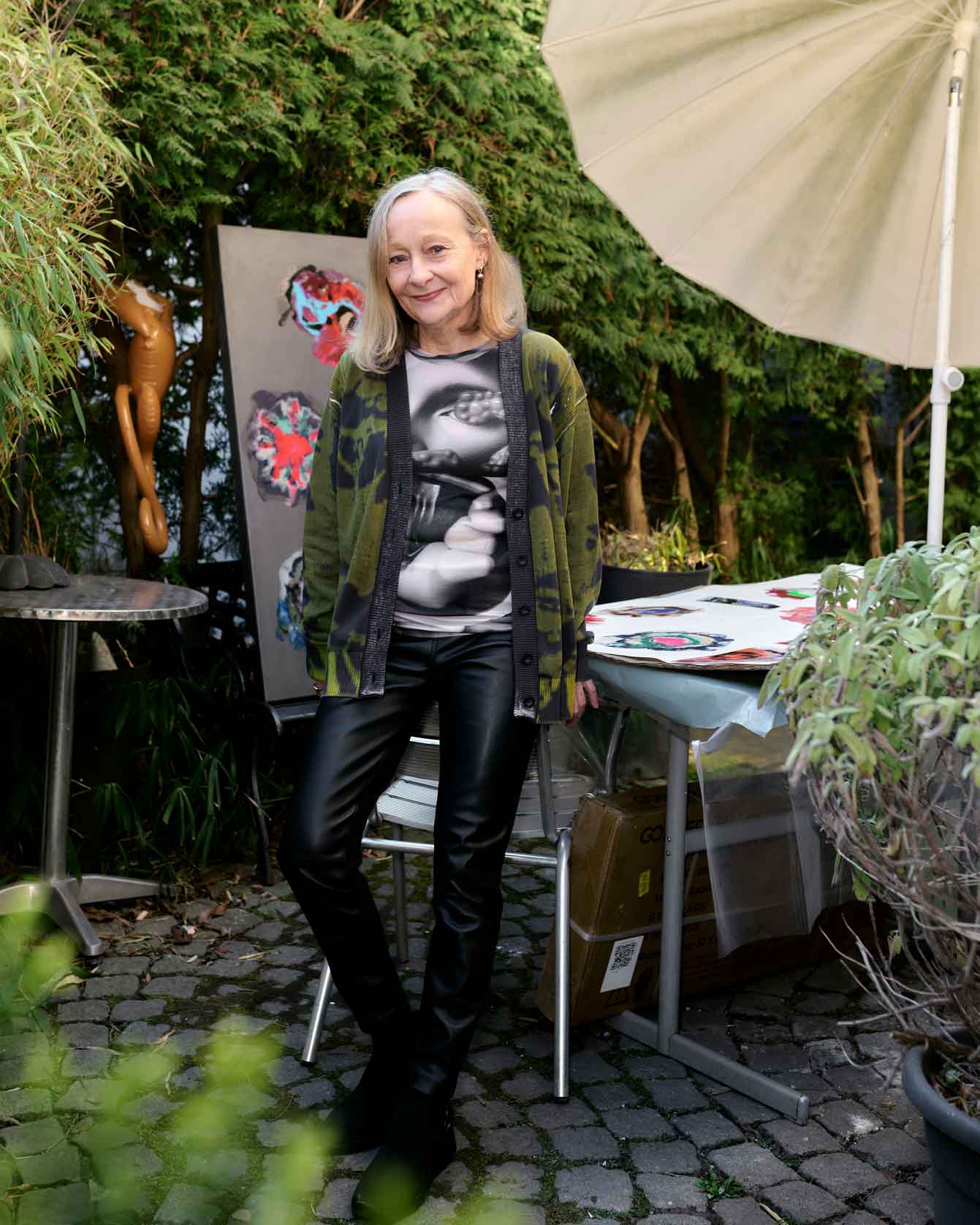About Time: With artist Klaudia Schifferle
11/18/2025
9 min reading time
Klaudia Schifferle is not just a musician, but also a painter, sculptor, songwriter, and illustrator. A conversation with the now 70-year-old about figures and materials, picture titles as poems, and why her all-women punk band is fed up with always having to answer questions about feminism.
“I like to add a refrain to my pictures before releasing them into the big wide world.”
Klaudia Schifferle
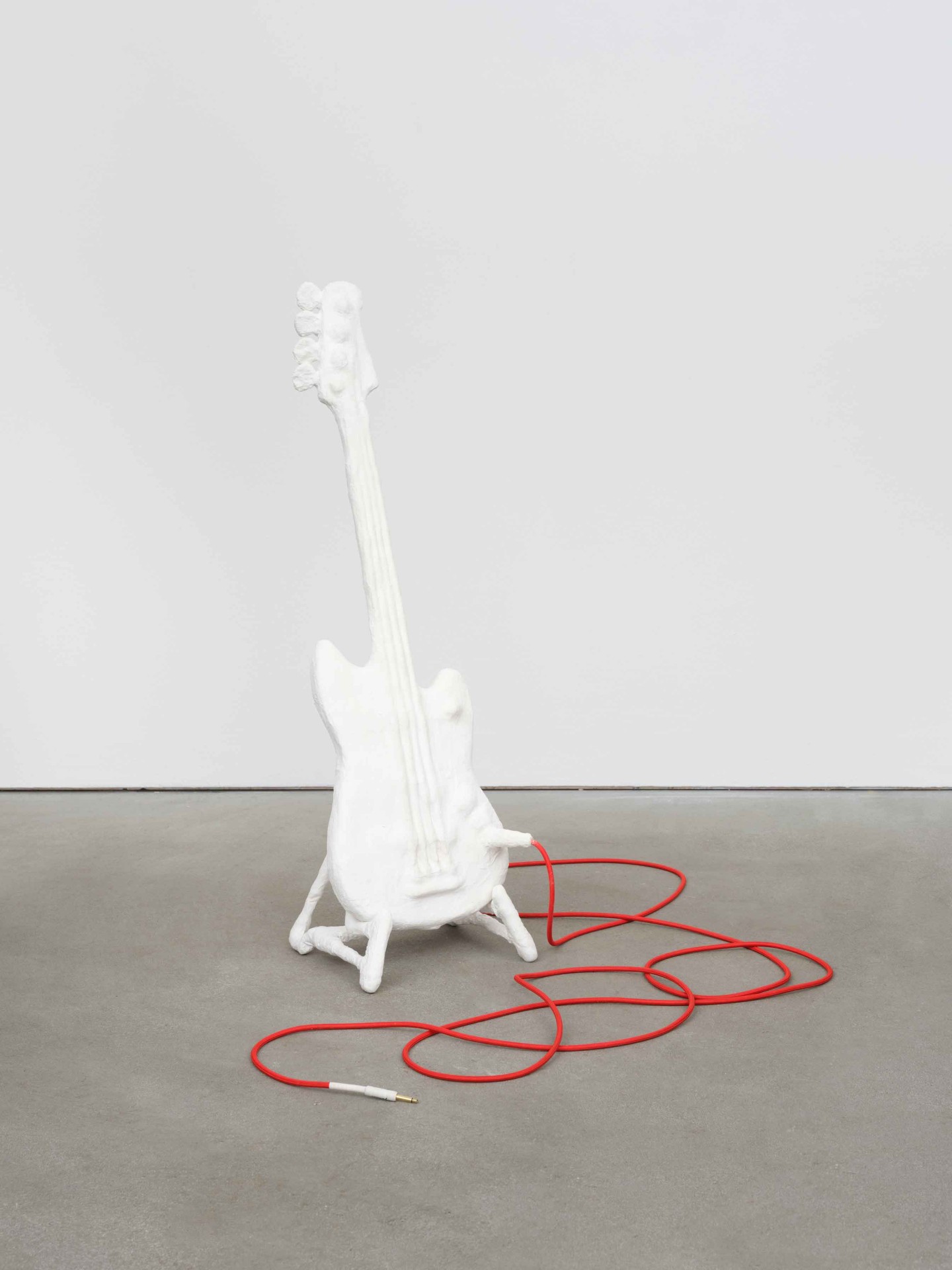

Dear Frau Schifferle, in 1977 you and a woman friend founded KLEENEX, which to this day is the best-known Swiss post-punk band and an international success. At that time, women had had the vote in Switzerland for a mere six years. How did it feel back then living as a young Punk musician in Switzerland?
Klaudia Schifferle
As a girl I was able to grow up very free and wild, and was always interested in music, I’d gone to ballet class for eight years and performed on stage from an early age. Which is why back then it was a great, joy-filled decision with my friend Lislot Ha to spontaneously found the girl’s band KLEENEX.
Did you define yourselves in feminist terms? Or were there other attributions that were important?
KlauDia Schifferle
I am and always have been a feminist.
The band was founded at the end of the 1970s, in a different phase of feminism, above all as regards Switzerland. As a female punk band, we very much took the limelight back then and did not need to explicitly declare we were feminists on top of all else. We wanted people to sit up and notice us for our music and not constantly field questions from journalists on being women, on feminism. We wanted to be active, to play our music. In the English-speaking world people were much more open to our music at that time and we were simply perceived as a band.
Lorem Ipsum
What role did music play in your artistic practice? Did it at the outset involve separate spheres that then converged somehow?
Klaudia schifferle
Sometimes they were separate spaces, sometime simultaneous, and often all these fields interact and mingle. Often, they mix, and I find the outcome is very exciting new content.
You then headed for Milan, only to relocate to a mountain village in Ticino in 1991, and since 2002 you’ve been living back in Zurich. How did these very different places influence your art?
Klaudia schifferle
The different places where I have lived and worked have of course influenced me. I spent my childhood in Zurich and my early years as an artist there, too. At the age of 17 years, I decided to embark on this journey to become an artist. Milan was the first big city where I was able to work on my own, surrounded by a new language and in a huge studio. That was so liberating for me, to encounter myself and my work in a new depth. I then lived for 12 years in a fairly remote place in Ticino, in a large house in the woods. That was exciting and the work was intense. Suddenly being in a beautiful world, immersed in subtropical nature. It refined my senses and my perception.
Many of your images, prints, and sculptures revolve around being human in the broader sense, under the specific and often very complicated conditions in which it all happens. You often rely on faces, heads, and grimaces. It’s a huge and at the same time very concrete topic. How did that evolve for you?
Klaudia schifferle
At the beginning of my work as an artist, in the 1970s, it was photography and short texts, comic-like drawings. And then, as of 1979, I produced my first paintings and drawings in enamail paint or gouache. The pieces were essentially abstract, a kind of sign. They developed a vocabulary of their own. Then figuration and the physical entered the picture. The theme was: living here as a human being. Finding the feelings, expression, for the energies of the time. Phases that were more figurative alternated with those that were more abstract.
What has always been important to me was the choice of material for the particular phase, it has to correspond in terms of the energies it possessed with the perception of that precise period of time. And that includes in a poetic sense!
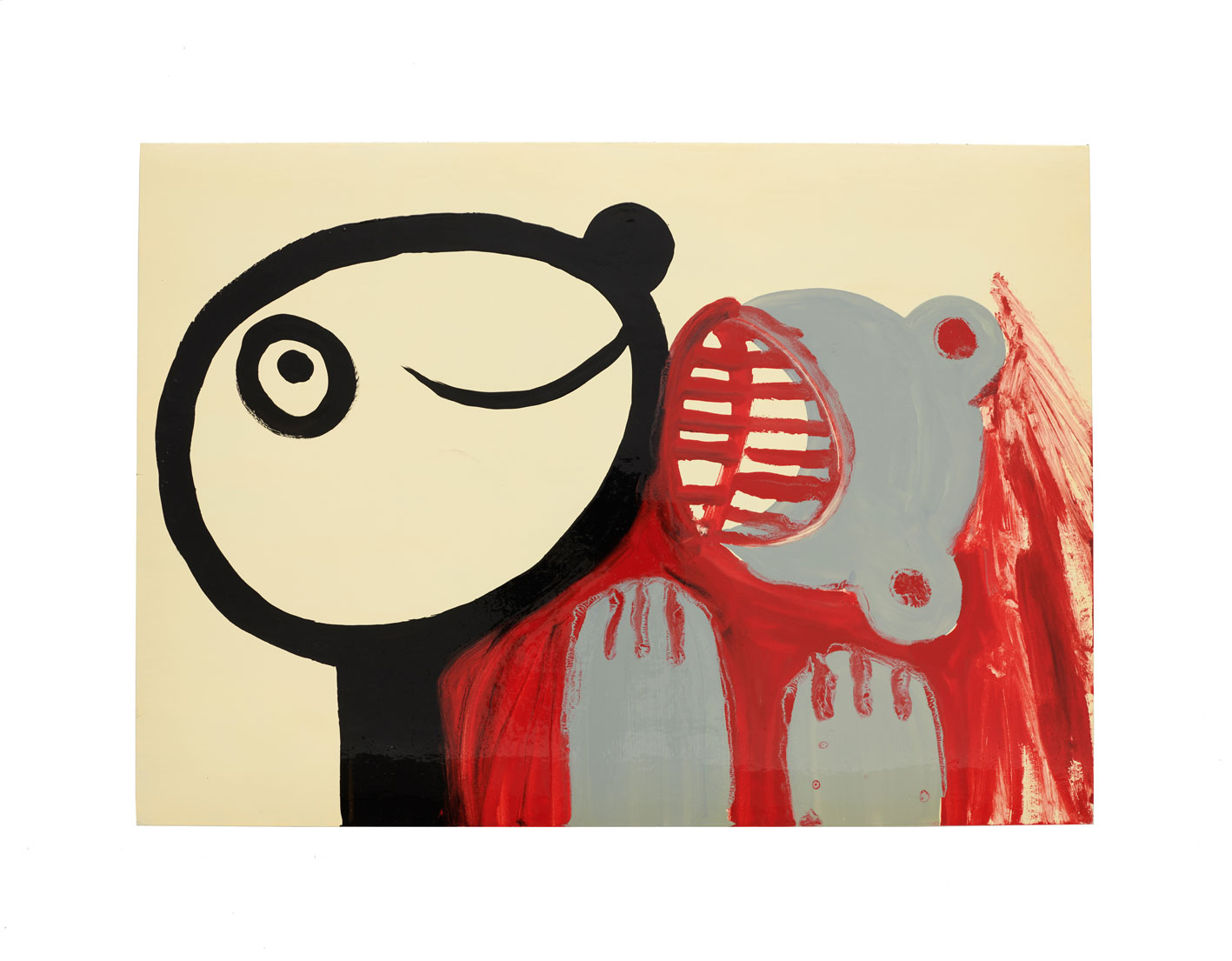
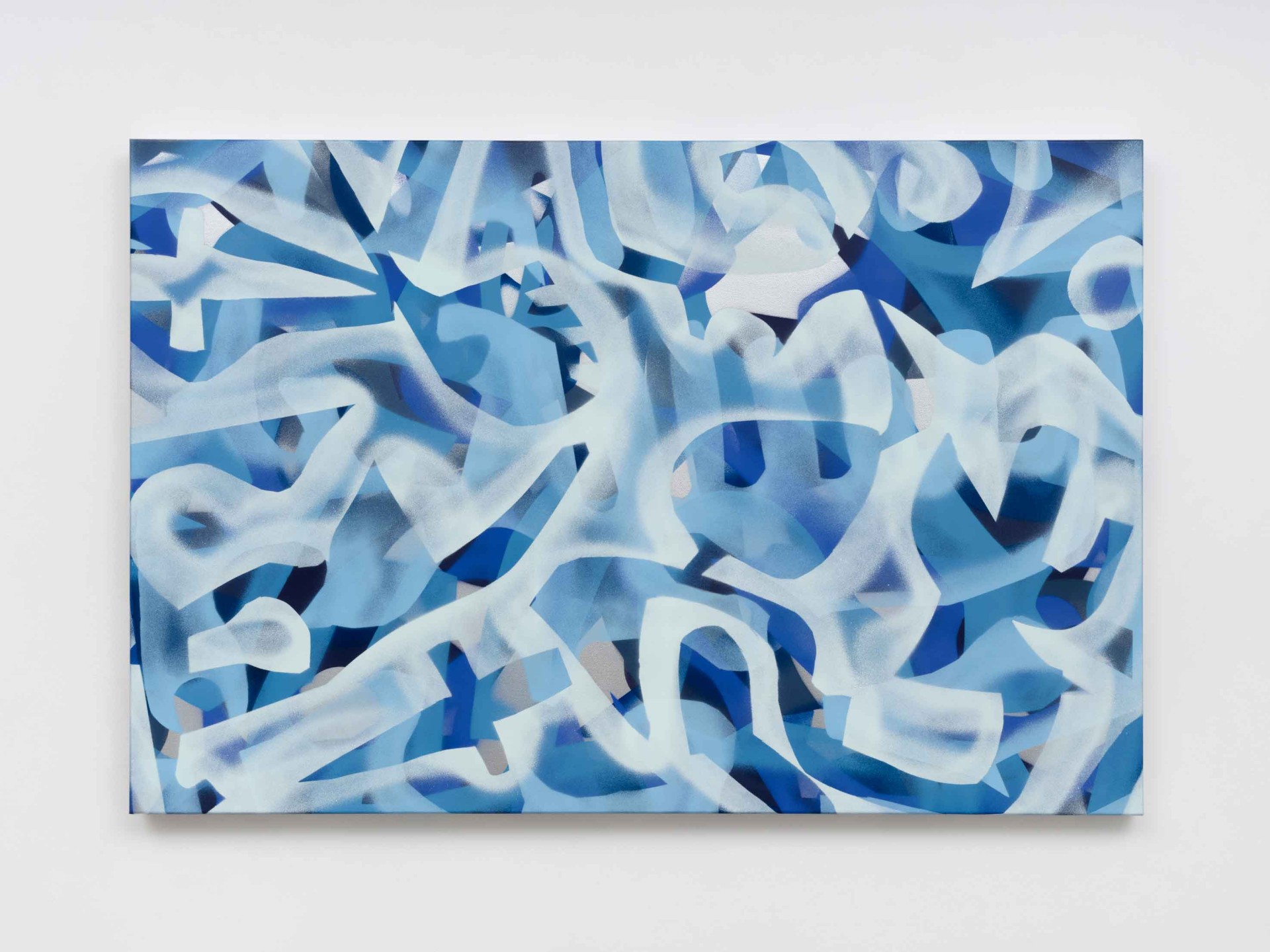
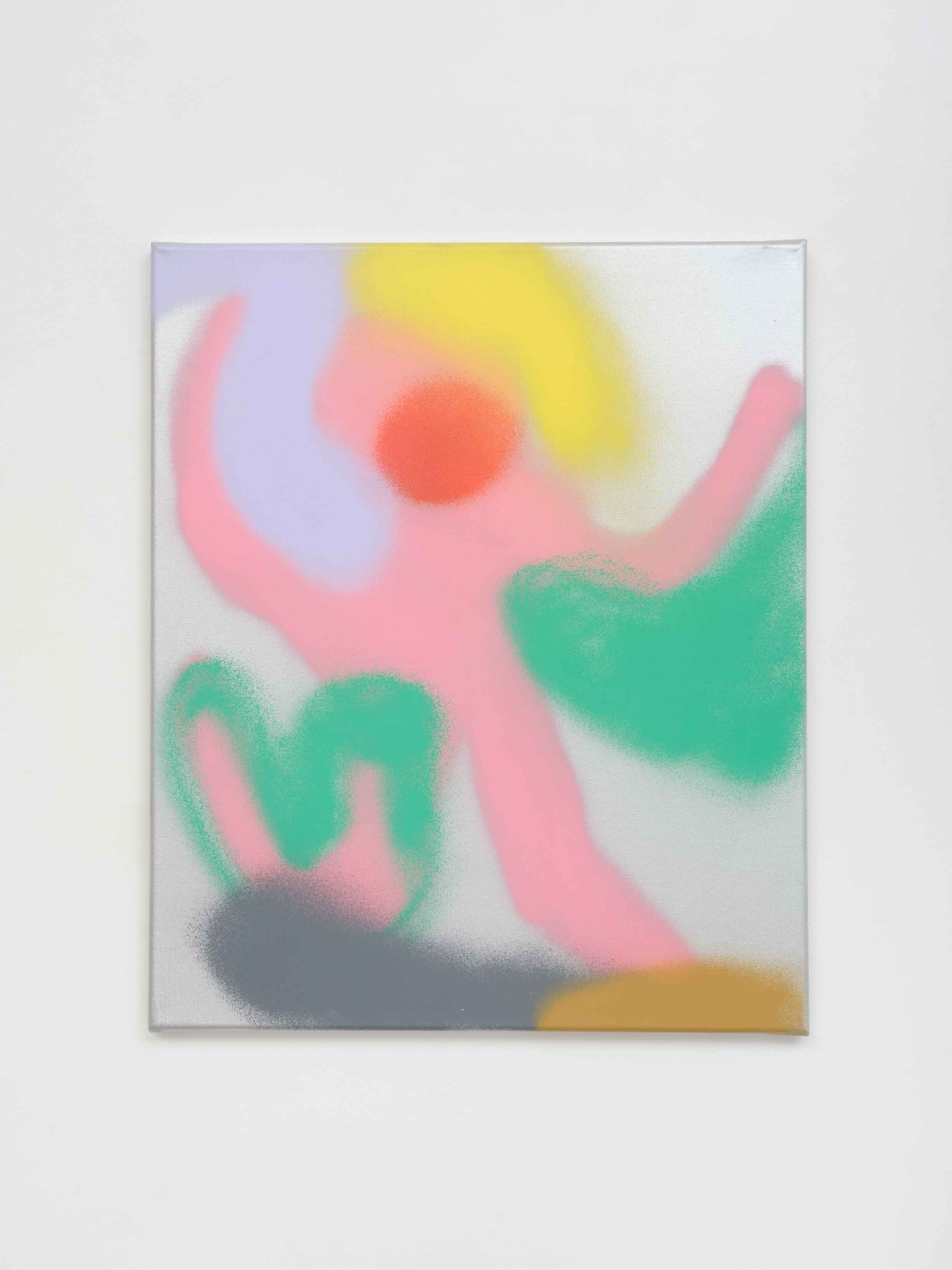
On the question of poetry: Your pictures in part have very poignant titles. What role do the titles play for the respective work?
Klaudia schifferle
For me, titles are often small poems. They occur to me, enter my mind during the work. Often, they pop up before the work itself, circle around in me, and then insist they are just right. Or I simply give the sculptures and pictures a refrain to accompany them on their way.
This series of conversations revolves not least around periods of time and how one’s own work changes with the different phases in one’s life. What was it like to be represented at Art Basel for the first time at the age of 70 – and with relatively early works into the bargain?
Klaudia schifferle
I was delighted with the presentation at the Art Basel this year, with my early 1980s works!
It was not the first time I was represented at the fair, however. I had a solo presentation there back in the early 1980s, it must have been in 1982 or 1983… The presentations were called something different back then, but I no longer know exactly what the designation was. And in 2011, I had a largish solo show at Galerie Ammann Fine Art.
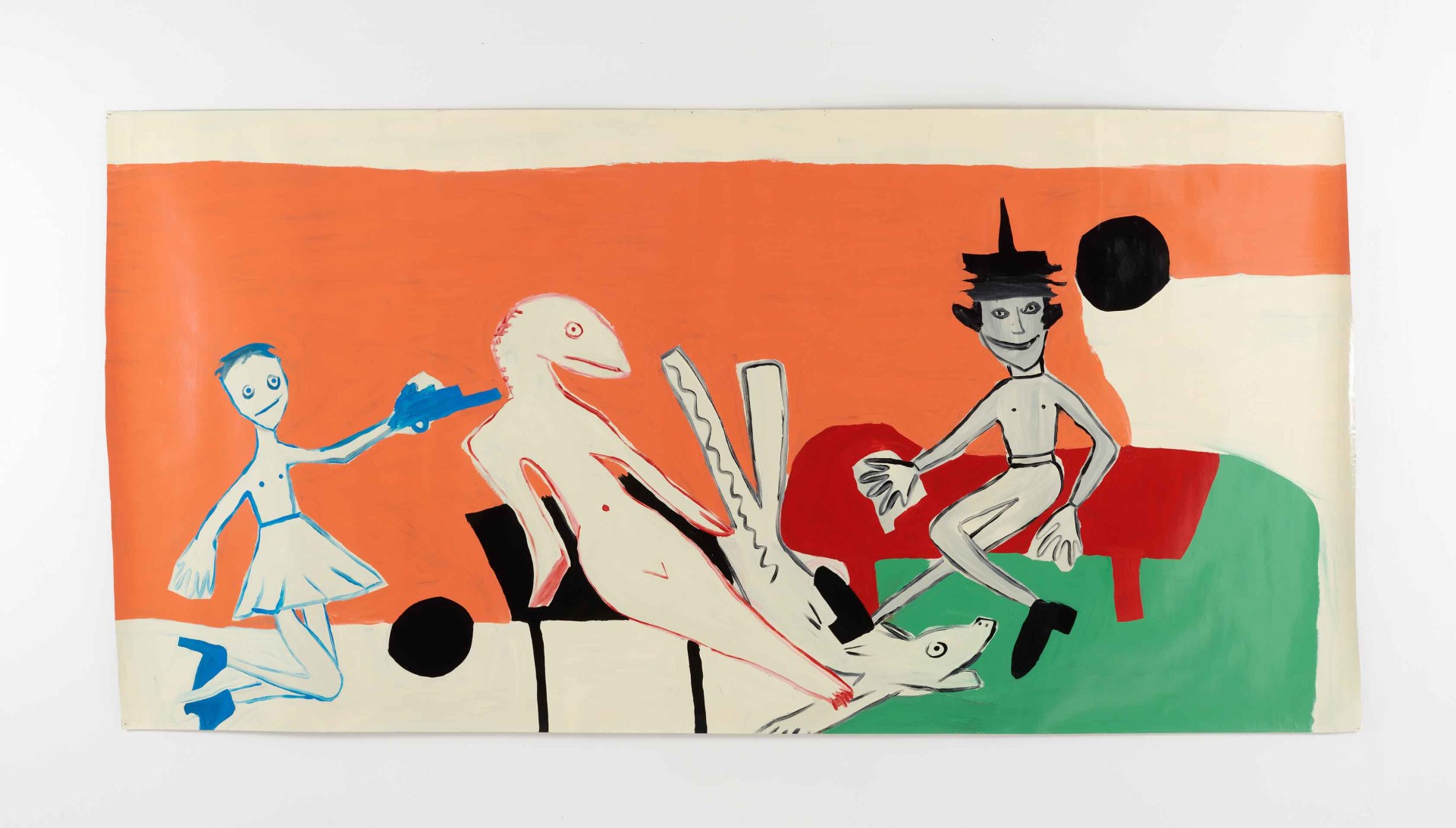
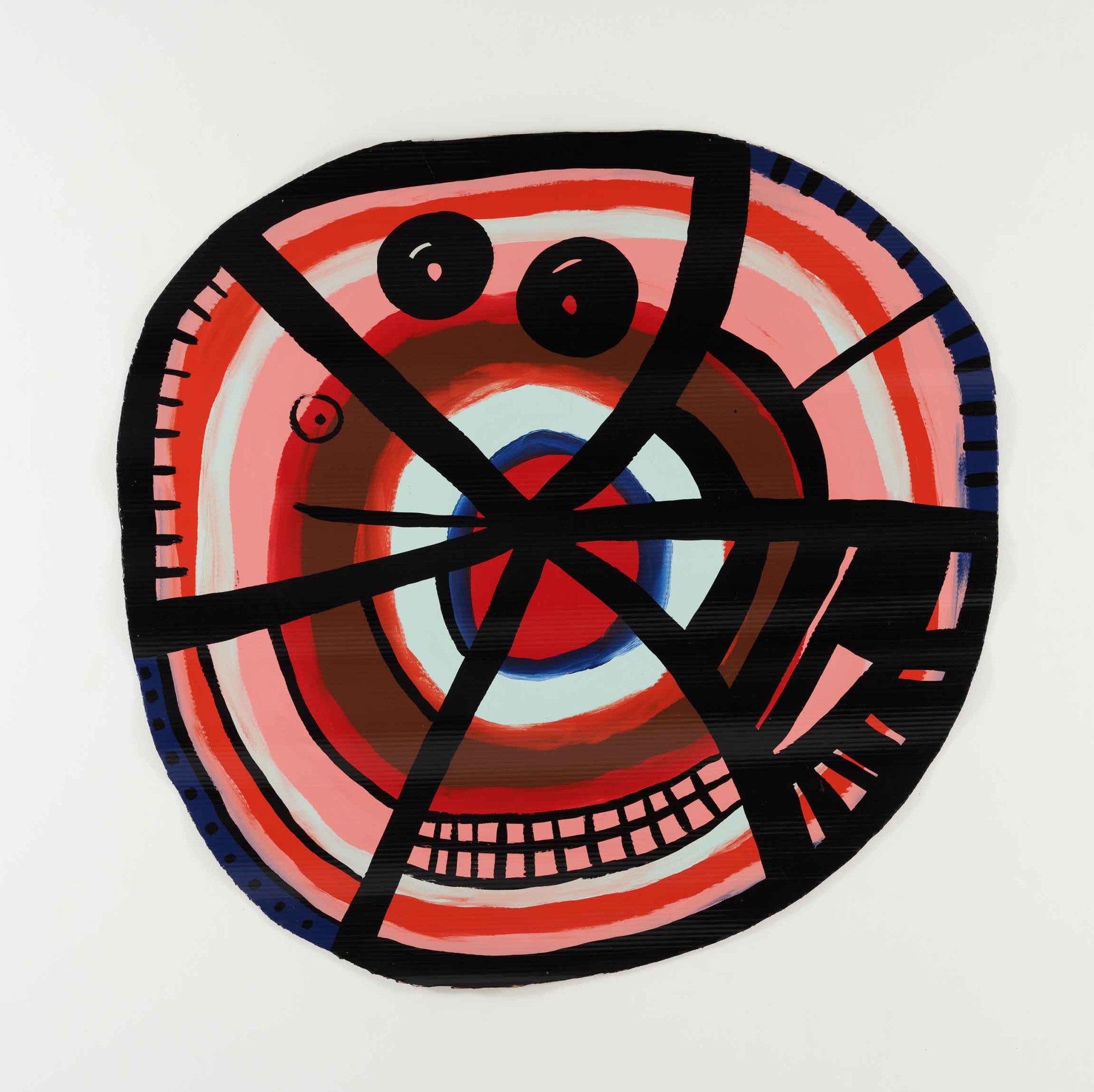
With your roots in Zurich’s subculture, did you actually view Switzerland’s largest art fair with a bit of suspicion, or was it simply exciting? Today, it seems to be about the unadulterated affirmation of the art market.
Klaudia schifferle
You’re right, that’s changed. In fact, everything’s changed completely. I personally never viewed it with suspicion. It was clear to me from an early point that it was a pretty wild ride if you saddle up with the art world! Just like the mad music business. It’s all about polarities.
This summer you exhibited very new pieces on rainbow paper in Munich. Let’s go back to colors and materials again, alongside the figures: If we look at your works across several decades then there’s a lot going on there, a lot of different things happening.
Klaudia schifferle
I’ve been at work on my oeuvre for over 50 years now. Materials are important to me and are an expression of the time when the piece was made. Since they consist essentially of countless tiny particles, they possess their own energy, which they radiate. It’s all about touch, sensory appeal, smell, and visual appearance. I choose new materials for each new work phase. That keeps things exciting, joyful, and challenging for me.
It’s not as though the figurative has disappeared in all my pieces. It repeatedly crops up. At the moment more in the sculptures, albeit in a reduced idiom. And in the spray-paint images I have been making since 2020. I’m busy working on a lot of different work groups. Some more figurative, others more abstract. The works do not get produced in some linear progression. Chronologically speaking, there are often pauses, and then I return to them again.
What interests you most at the moment?
KLaudia schifferle
Over the last two years I’ve taken part in lots of shows and at this very moment I’m happy that I can simply devote myself completely to my new works. At present, I’m mainly focusing on sculptures, spray-paint images, and works on paper.
Does music still play a role in some way, inside or outside the studio?
Klaudia schifferle
I’m busy composing a few small songs, recording beats, and writing lyrics. Music will always accompany me through life and in my work.
